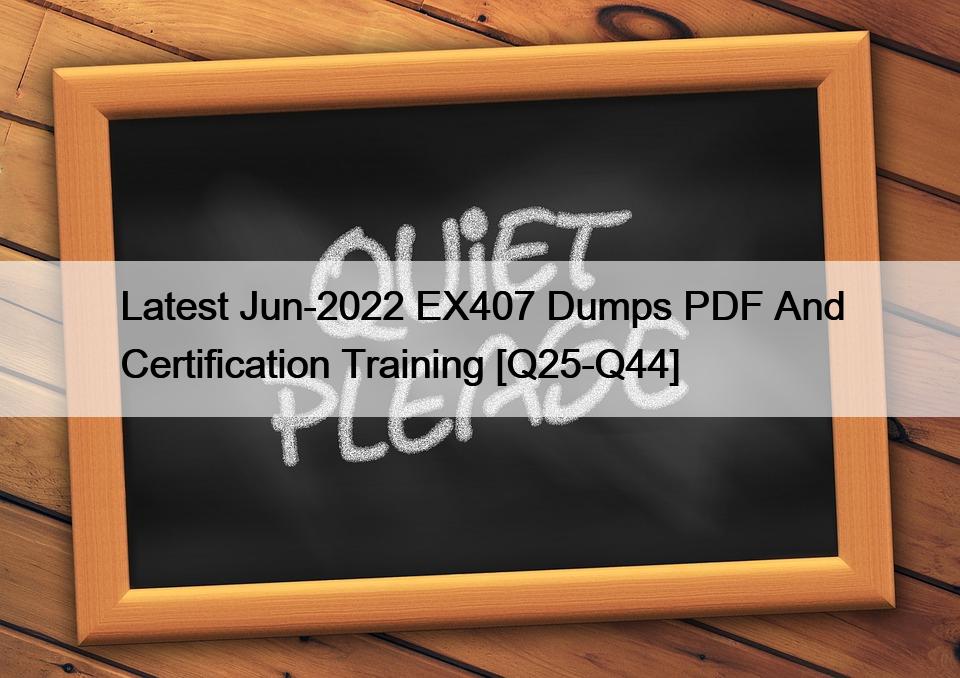|
This page was exported from Free Exams Dumps Materials
[ http://exams.dumpsmaterials.com ] Export date: Sat Mar 29 4:27:56 2025 / +0000 GMT |
Latest Jun-2022 EX407 Dumps PDF And Certification Training [Q25-Q44] Latest Jun-2022 EX407 Dumps PDF And Certification Training Check your preparation for RedHat EX407 On-Demand Exam EX407 Exam topicsCandidates must know the exam topics before they start of preparation. Because it will really help them in hitting the core. Our Red Hat EX407 exam dumps will include the following topics:
The benefit in Obtaining the EX407 Exam Certification
Difficulty in writing EX407 ExamCandidates face many problems when they start preparing for the Red Hat EX407 exam. If a candidate wants to prepare his for the Red Hat EX407 exam without any problem and get good grades in the exam. Then they have to choose the best Red Hat EX407 exam dumps for real exam questions practice. There are many websites that are offering the latest Red Hat EX407 exam questions and answers but these questions are not verified by Red Hat certified experts and that's why many are failed in their just first attempt. DumpsMaterials is the best platform which provides the candidate with the necessary Red Hat EX407 questions that will help him to pass the Red Hat EX407 exam on the first time. The candidate will not have to take the Red Hat EX407 exam twice because with the help of Red Hat EX407 exam dumps Candidate will have every valuable material required to pass the Red Hat EX407 exam. We are providing the latest and actual questions and that is the reason why this is the one that he needs to use and there are no chances to fail when a candidate will have valid Red Hat EX407 exam dumps from DumpsMaterials. We have the guarantee that the questions that we have will be the ones that will pass candidate in the Red Hat EX407 exam in the very first attempt.
Valid EX407 Dumps for Helping Passing RedHat Exam: https://www.dumpsmaterials.com/EX407-real-torrent.html |
|
Post date: 2022-06-22 14:42:34 Post date GMT: 2022-06-22 14:42:34 Post modified date: 2022-06-22 14:42:34 Post modified date GMT: 2022-06-22 14:42:34 |